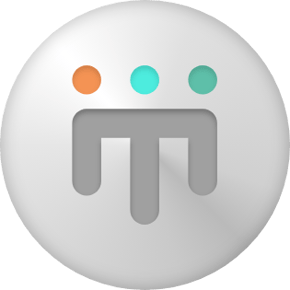Is the suspense too much? Don’t worry, we won’t keep you waiting.
The question is, who comes first in your organisation?
Most organisations have to choose between customers, employees and in some cases shareholders because they must meet all of their needs. And depending on who you ask in your organisation, you’ll get a different answer on which group is more important.
Working in HR, we’re biased. And yes, all three are important. But one has to come first. And when it comes to culture, it’s important you put employees first. Because they drive the mission and values, which pushes the vision of the organisation. In other words, if you put employees first, they become stewards of culture.
In this blog, we’ll explore the power of putting employees first and the impact it has on organisational culture by looking at some examples. We’ll then explore the impact AI can have on culture.
Why employees come first
The co-founder and former CEO of Southwest Airlines, Herb Kelleher always used to say employees come first.
His view was that if organisations put employees first, then they’ll treat everyone else they interact with in their day right. Contractors, vendors and customers. And then, customers will come back, spend money and keep shareholders happy.
Sounds simple enough, right?
An employee first approach doesn’t mean you can’t put shareholders or other stakeholders first. It just means that when you're thinking about how to drive culture, understand that employees come first. The point is, there are times when organisations need to make business decisions and employees don’t come first. But understanding who comes first in different situations can make all the difference.
Let’s play a game. Take these three scenarios. From an HR perspective, which of these will help drive culture?
- Give employees the scope to resolve customer disputes without approval, or implement a new policy that requires every customer dispute to be escalated to a manager?
- Pay a dividend to shareholders after a successful quarter, or deploy the capital into an AI technology that makes customer service 5x more efficient?
- Push employees to work overtime before the end of the financial year and show a higher profit, or show a smaller profit before the end of the financial year?
You’re not wrong. In all of these situations, there’s room to move, compromise and find a situation where employees, executives and stakeholders win. But you’re also not silly. Too many HR managers over-index on keeping executives happy because they feel their job is more secure when the stock price is going up.
Which is fine, but it becomes a problem when it happens to the exclusion of other groups in your organisation. And in the rapidly changing world of AI, there’s no room for not prioritising employee engagement.
So what happens if you don’t grow your culture and integrate it at the same time with technology?
AI can’t replace culture
Google was the leading online platform in search until ChatGPT came around. Despite Google’s early AI innovations through DeepMind, Google hesitated to launch the program because they thought it would cannibalise its core ad search business.
When ChatGPT exploded, Google launched Bard (now known as Gemini). The launch was widely criticised by employees because they felt it was reactive rather than visionary, leading to disengagement and eroding trust in leadership.
Organisations that fail to recognise the shift in technology and energise their workforce are not uncommon, with Kodak being another great example. Meaning in the tech world, employee engagement is an important way to build a competitive advantage in adapting to change. Organisations that fail to put employee engagement first, even through huge organisational change like developing and integrating AI, make a huge mistake as employees drive the vision of the organisation. Asking who comes first defines what cultural success looks like in an organisation. So what’s the right mix of technology and building culture?
Rebuild engagement now
The best time to deal with employee engagement was five years ago.
Building and developing culture takes time. Training managers takes time. Finding employees who can drive vision takes time too. But you know that. So, what do you do if employee engagement hasn’t been priority number one?
As the Chinese proverb goes, “the second-best time is now”.
Define what that means for your organisation. Get employees on board and build strategies that keep employees floating and not drowning from day one.
Even if your organisation has made employee engagement a priority for years, your work isn’t done. Engagement is a top priority, today, tomorrow and in the foreseeable future. That means it’s not about when you start making engagement a priority, but the fact that you are.
Do the work and reap the reward
Whether it’s communicating what the organisational culture is, allocating time and resources to maintaining it, or making the commitment to change when necessary, if organisations want the benefits of having a great culture, then they have to do the work. No shortcuts. That’s how you get the reward. And the reward benefits the company, the employees, and the profit line.
Creating and maintaining culture is tough. It takes a lot of time and conversations for organisations to get to the place where everyone agrees about what the organisation’s culture should look like. But getting everyone on the same page can be a great way to refocus and might be exactly the strategic activity that the organisation needs right now.
About us
Martian Logic helps HR teams lead culture with intention, even in an AI-driven world. Our HRIS gives you the power to put employees first, without sacrificing innovation or speed. From hiring to performance to feedback loops, we help you embed culture into every touchpoint so employees feel engaged, not left behind. Whether you’re defining what “people-first” means in your organisation or rolling out your AI roadmap, we make sure technology amplifies your culture instead of erasing it. Ready to build a future where engagement drives everything?









